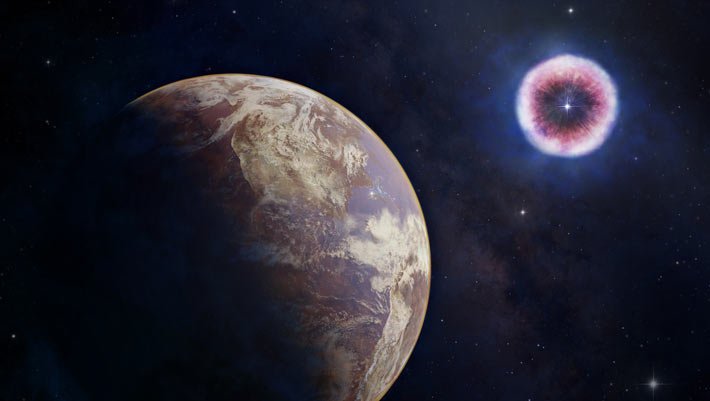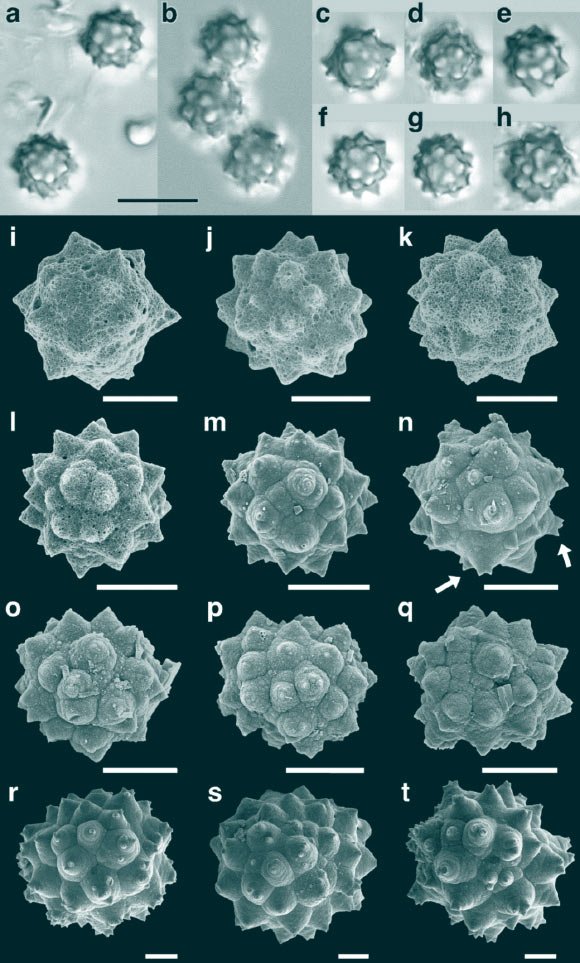Ceres is the largest object in the main asteroid belt, and the only potential ocean world in the inner Solar System.

A global scan for organic-rich sites on Ceres using a deep neural network revealed two new sites close to the well-known Ernutet crater. Image credit: Sarkar et al., doi: 10.1029/2024AV001362.
“Ceres is the largest object in the main asteroid belt, and the only potential ocean world in the inner Solar System,” said Dr. Ranjan Sarkar from the Max Planck Institute for Solar System Research and his colleagues.
“It is key to understanding not only the formation and evolution of individual planetary bodies, but also the structure of the Solar System.”
“Its current location within the asteroid belt provides conditions for the potential long-term preservation of water ice beneath its surface.”
“The overall carbonaceous chondritic composition of Ceres has been known for many years, but the high spatial resolution data from NASA’s Dawn mission enabled individual evolutionary steps and small unique surface materials to become detectable.”
“Among these findings, the discovery of organic-rich sites is an important one,” they added.
“Previous research had identified three craters on Ceres — Ernutet, Inamahari, and Urvara — that contain detectable deposits of complex organic compounds.”
In the new study, the authors aimed to better understand the global distribution and geologic context of all the organic-rich sites on Ceres.
They used a deep neural network to scan the dwarf planet’s surface and identify any additional organic-rich areas that may have been missed in earlier studies.
They found that only two of the newly-identified reddish sites actually contain organic material.
At the previously known organic-rich sites of Ernutet, Inamahari, and Urvara, the organic material is found to be confined to just the upper surface layer.
There is also an absence of geological features that would suggest an internal, endogenic origin for the organics.
“Sites of such organic molecules are actually rare on Ceres, and devoid of any cryovolcanic signatures,” Dr. Sarkar said.
“The vast majority of deposits can be found along the edge or near the large Ernutet crater in the northern hemisphere of the dwarf planet.”
“Only three are located at a greater distance from it. Two patches were not previously known.”
“A closer look at the geological structures at the locations of the organic material allows further conclusions.”
“At none of the deposits do we find evidence of current or past volcanic or tectonic activity: no trenches, canyons, volcanic domes or vents. Furthermore, there are no deep impact craters nearby,” said Dr. Martin Hoffmann, also from the Max Planck Institute for Solar System Research.
“Of course, the first assumption is that Ceres’ unique cryovolcanism has transported the organic material from the interior of the body to the surface,” said Dr. Andreas Nathues, also from the Max Planck Institute for Solar System Research.
“But our results show otherwise. At the sites of cryovolcanic activity, there is no proof of organic matter.”
“And where organic compounds have been reliably detected, there is no evidence of deep or surface activity.”
The study was published in the journal AGU Advances.
_____
R. Sarkar et al. 2025. Ceres: Organic-Rich Sites of Exogenic Origin? AGU Advances 6 (1): e2024AV001362; doi: 10.1029/2024AV001362











